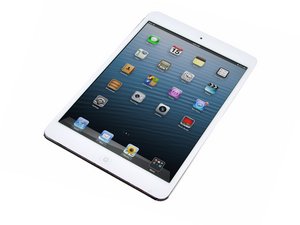okieday so a bunch of things. :p brace yourself for information overload ^-^
1) Regardless of the Type of adhesive the people who repaired you device use, ipads are not waterproof. this would have likely happened regardless of the screen replacement.
2) Water in its purest form (H2O), is non conductive. meaning it will not cause issues with the electronics. it is the minerals inside the water. Calcium, Lime, Zinc, Nickel, all reside in tap water, lake water, rain, ETC. these are what cause problems with electronics. All drying out the device does, is remove the H20. the remaining minerals stay on the board. we call this, Corrosion. This is conductive, and erodes the device.
a) First step, would be to buy a bottle of Isopropyl, (99% Preferred) and sumberge the mother board into it. for 20 minutes. Alcohol is non conductive, and will break down the corrosion. be sure not to sumberge cameras, or microphones into this, as it will eat away at the more sensitive components in it. standard board components can withstand the abrasive nature of the alcohol.
b) Remove the board, and scrub at it with a toothbrush. (soft bristle) everywhere on the board, while it is still wet from the alcohol. After a good scrub, dip it in, and sift it around in the alcohol. this will rinse off the board from any other corrosion.
c) dry the board. set it out, and let the alcohol evaporate, or for quicker drying, a low setting air blower will disperse the alcohol until dry.
d) Reinstall board.
e) be sure to charge the battery with an external power supply, 5-10V. (Short circuits drain batteries rapidly.) Hold the supply leads to the battery's corresponding traces for 10 minutes. This is called exciting the battery. ----eii) If this doesnt work, the battery may be fried, and needreplacing.
f) if all the above does not work, the Electronics in the motherboard have likely fried out due to the corrosion, and replacing the device will be cheaper than repairing it.
+++++
Most common mistakes by End users, that they dont know will harm the device
1) RICE: do not use rice to dry out electronics. not only is it the slowest way to dry it out, as explained above, it doesnt actually fix water damage
2) Powering on the device after submerging device: it is our instinct. "please work please work please work." Yes everyone does it. however, once that electricity is exposed to a short circuit, it substantialliy increases risk factor of damage.
3) Beleive because its working now, it will not fail later on: Water damage is corrosion on the board, those minerals expand, crack, and powder inside the device. it is always suggested to remove the corrosion as soon as you can. it is easiest to do while the device is still wet.

 1
1  29
29  4
4